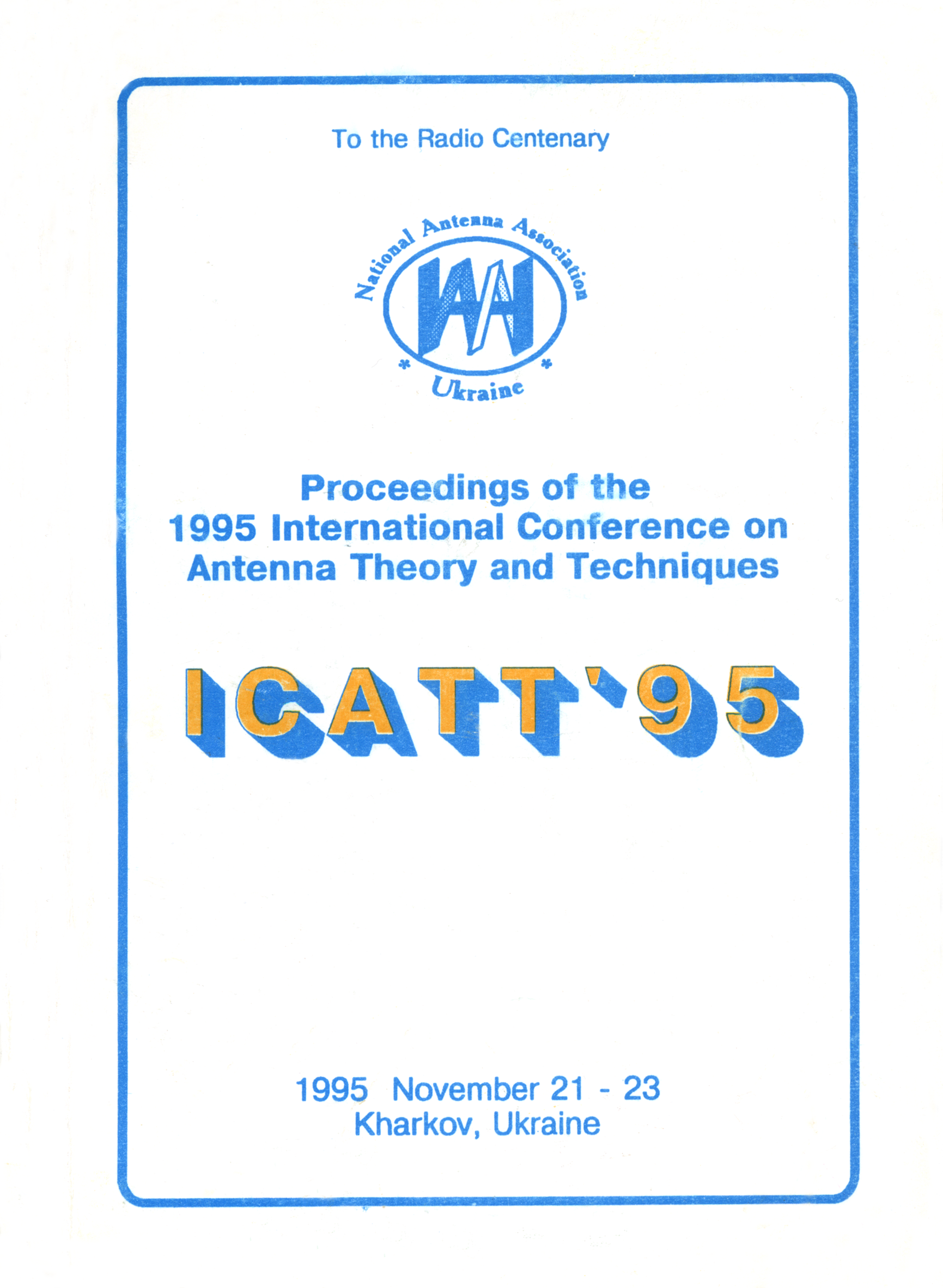Application of spectral analysis methods in antenna measurements
DOI:
https://doi.org/10.1109/ICATT.1995.1234163Abstract
The methods of subnanosecond pulse measurements have been widely adopted recently in measuring the microwave antenna radiation patterns (ARP) in low anechoic-level compact ranges. However dispersion of the waveguides and narrow bandwidth of some antennas make these methods inapplicable in certain cases. An alternative approach to ARP determining is the usage of frequency-domain measurements at a sufficient number of frequencies. Here it is more appropriate to apply modem methods of spectral analysis such as Prony’s method or the pencil-of-functions method rather than conventional discrete Fourier transform.
The approach has been examined for the data obtained from an experiment carried out for the EI6-23A antenna in the range from 1040 to 1300 MHz. The diversity of measured ARP for different realizations at the same frequency reached 14 dB. After averaging 10 measurements, for eliminating the additive noise, the diversity of ARP values corresponding to different datasets was about 12 dB, that indicated significance of determined distortion. To cancel abnormal values of the experimental data it might be advisable to process the latter by the median filtering method.
Normalization by the complex gain modulus enabled us to estimate damping sinusoidal parameters by Prony’s method. To improve the accuracy while evaluating the parameters we were interested in, damping coefficients before measuring sinusoidal amplitudes are to be zeroed. As a result of the above mentioned processing the diversity of ARP estimates did not exceed 1.7 dB (for ARP levels more than -20 dB) and 2.7 dB (for the ones less than -20 dB).
Thus the diversity of ARP estimates has been reduced 4 times in the range to –10 dB, and almost 80 times in the range from -10 to -20 dB. Furthermore the estimation of parasitic components amplitudes has enabled us to determine the measuring range echoing level that appeared to be -16 dB.

